If you’re looking to improve your Marketing results, based on evidence & data, these marketing psychology study insights are so powerful! In this episode, you’ll learn about 5 marketing psychology studies, their findings & how you can implement these marketing psychology insights to improve your Marketing results.

Pat 0:00
Hi, Pat the podcast editor here! psychology and marketing go hand in hand and understanding your target audience on a psychological level almost ensures a successful marketing campaign. So in today’s episode, Dan breaks down some important psychological concepts and how they directly relate to marketing campaigns giving some real-world examples of how they’ve managed to apply them here at Knowlton.
Dan 0:24
And, In terms of how Knowlton applies this, our whole marketing strategy for us and all of our clients is to do this exact thing.
Pat 0:34
And Lloyd drops not one, but two humble flexes in today’s episode, because Lloyd is not only an extremely successful CEO, but he’s also a regular person, just like you and me.
Lloyd 0:45
I’ve been bodybuilding a bit recently because I’m a pretty cool guy. I recently listened to a 25-hour audiobook on psychology
Dan 0:56
Get a life.
Pat 0:59
This episode is filled with practical tips guaranteed to skyrocket your marketing campaigns with the power of psychology. So have your notepads at the ready! This is episode 112 of the Business Anchors Podcast.
Lloyd 1:24
Dan is in this episode of the Business Anchors podcast sponsored by Adobe Express. Why are we talking about psychology when this is supposed to be a business podcast?
Dan 1:32
That’s a good question, Lloyd. Did you know there’s a close relationship between psychology and marketing? That’s why we’re talking about it.
Lloyd 1:40
Okay.
Dan 1:40
And actually, the real reason is this has been inspired by Rory Sutherland, who last week’s episode (episode 111). We spoke about psychology a little bit and how you can increase the perceived value of what you do based on a podcast I watched, which was where Rory Sutherland was interviewed by Stephen Bartlett on the diary of a CEO. And since watching that, I’ve kind of gone down a rabbit hole of psychology and psychology studies in marketing and I realized I was like looking at this stuff, thinking it’s really interesting and thought our listeners might find it interesting as well.
Lloyd 1:40
Okay, so when we spoke about Rory Sutherland before and that stuff, the listeners just absolutely loved it. So we’re gonna do more of it.
Dan 2:22
Exactly. Yeah, they did. Well, we only just posted that episode today. So we don’t know if they loved it. Yeah but…
Lloyd 2:28
I mean, you don’t need to tell them everything.
Dan 2:30
We’re honest, Lloyd.
Lloyd 2:32
Tell them everything!
Dan 2:34
So there are several insights we’ve learned from psychology studies that I want to go through and talk a bit about it. The takeaway in terms of the marketing takeaway, and then I want to give some examples of how Knowlton we’re Implementing stuff we’ve learned from those studies, or what we’re doing that reinforces the points we’re making based on the insights from the studies. Does that make sense?
Lloyd 3:01
A bit intense for the Business Anchors podcast. I noticed the first point, you’ve given yourself a bit of a reading challenge. I’m looking forward to hearing you pronounce this…
Dan 3:16
I am going to be using some notes here because there’s quite a lot to remember from the studies. I’m not going to die by reading loads of stuff. But there are some specific points I need to get across based on the insights from the studies and some of the people’s names who have done the studies are very, I still don’t know how you say them and also some of the words in the studies. I don’t know how you say
Lloyd 3:36
Ah, you sound highly intelligent…
Dan 3:38
No, but the insights Lloyd and I think the value people will get from the insights…
Lloyd 3:43
So just trust us! Even though Dan can’t read this stuff he’s gonna be talking about, it’s really interesting and informative.
Dan 3:50
Don’t try and made me look stupid Lloyd. We’re gonna be saying good stuff. It’s just some kind words I can’t say!
Lloyd 3:57
All right. Okay.
Dan 3:59
So should we dive in? Okay. So the first lesson is to do with reciprocity.
Lloyd 4:07
Bless you.
Dan 4:11
Reciprocity…
Lloyd 4:12
Bless you.
Dan 4:14
So, so, so please stop saying that every time.
Lloyd 4:17
Yep yep, I will stop.
Dan 4:19
To do with reciprocity, and it’s all about us feeling obliged to give back to people who have given to us and I think this is quite a well-known thing, like the power of reciprocation, and doing things because you feel like someone’s done something for you. But there are actual studies to back this up and in terms of lessons, we can learn when it comes to marketing. There are quite a few. So do I know about this brief bit about this study, I certainly do. Yes. So 2002, a team of researchers found that waiters could increase the tips they earn by using reciprocity. So tips went up 3% when diners were given an after-dinner mint, you know like when you’re at a restaurant and you get a little mint and you think oh that’s nice, they gave me a little mint, I’m gonna give them a small tip.
Lloyd 5:04
Oh, is that why that happens?
Dan 5:06
This study says so, I guess so yeah, this is a very famous study.
Lloyd 5:09
I always thought this was a weird part of a meal. So we’ve ordered all this stuff and here’s something you didn’t order, right at Yeah. That we said we’re finished. ,
Dan 5:19
Even more interestingly. So tips went up 3% When they had the mint, tips went up 20% while delivering the mint, the server paused, looked the customer in the eye, and then gave them a second means while telling them the mint was specifically for them.
Dan 5:39
You’re just paying them to go away at this point.
Dan 5:41
That’s crazy specific but yeah, it kind of makes sense!
Lloyd 5:46
It’s having a personal interaction rather than ‘I do this for you’ rather than ‘I just dropped these mint’s on every table’ It’s like ‘there you go!’
Dan 5:57
You wouldn’t do good as a waiter… but there is like when you’re hearing these studies, there is logical thought and reasoning behind this and it kind of makes sense doesn’t it!
Lloyd 6:05
I’ve read about a study as well, I… think about this, I recently listened to a 25-hour audiobook on psychology…
Dan 6:18
Get a life.
Lloyd 6:20
I didn’t do it, like, just 25 hours straight! It was over a month. One of the studies in that audiobook was, I think this is quite an old-school style of selling. I remember this happening at our house when we were kids, there used to be more kind of, you know, like Avon where they come to your door and sell to you and stuff. That used to be more common because there wasn’t the Internet to order things. So be like, ‘Oh! my mate Sharon, she does perfumes’ you know, that sort of thing. They had a study where they would give a gift. Just like ‘Oh, thank you for letting me come into your house for me to show the stuff’ Yeah and I think it was like a shaver worth like a fiver. Yeah, but I don’t know the exact things. But when they gave that at the start, crazily more people bought from them than when they didn’t and you think, giving someone like a razor that they don’t even want or need. I think yeah, it’s that thing of like ‘Oh, they’ve done something for me’ So now I want to as well…
Dan 7:23
Reciprocate. Exactly. In terms of like the main takeaway here, in terms from a marketing perspective, it’s to provide value for your customers upfront before trying to sell to them. This is the same message we’ve been banging the drum constantly saying to you all to provide value and create content that educates, entertains and inspires your customers before just creating content about your products and services. Our whole in terms of how Knowlton applies this, our whole marketing strategy for us and all of our clients is to do this exact thing.
Lloyd 7:58
It’s interesting for our own business at Knowlton, there are loads of things that we were crap at in the early days but actually, that is something we did from day one. It will provide value and it was a bit of a hopeful thing at first, but it’s like, in the hope that at some point, people will be like, you’ve been teaching me all this stuff for free. So I’ll now have an opportunity to work with you. Yep, I’m going to do that and yes, it like I said was a bit more hopeful. Now we’re educated and we’re like, oh, there’s reasons why this works and that kind of thing. But it has been a major thing.
Dan 8:30
Do you know why we did that from the start?
Lloyd 8:32
Because you were clever?
Dan 8:33
No.
Lloyd 8:35
because Gary Vee said to do it.
Dan 8:38
I blindly followed whatever Gary Vee said, initially, and then when we started working together, I told you to do it too.
Lloyd 8:45
Thank you, Gary.
Dan 8:48
And I guess slightly meta before, just before we move on to the next one. This podcast is an example of how we do this. We are giving you the best insights and lessons that we’ve learned from growing our business and running marketing campaigns for some of the biggest brands in the world. We’re not holding back or giving all of this away to you for free because we know there’s a small percentage of you that eventually in the future will become a customer…
Lloyd 9:11
It’s about time some of you guys reciprocated isn’t it.. that’s what Dan is trying to say.
Dan 9:16
Yeah, so yeah, the power of reciprocation is a really interesting study. Are you interested in hearing another one Lloyd?
Lloyd 9:25
I would like to hear another one.
Dan 9:27
This relates to your Avon example a little bit, okay and it’s called the foot in the door method.
Lloyd 9:34
Oh, moving on to how to break into people’s houses
Dan 9:38
So, the whole point of this is when asked to make a small commitment first, we’re more likely to agree to a larger request later. So there is a study to back this up. The first study on the foot-in-the-door method was performed in the 1960s, That’s mad, by Jonathan Friedman and Scott Fazer. Researchers phoned several home make goes to inquire about the household products they use. So they called up asking them what products do you use.
Lloyd 10:04
You tell you reading this bit because you’ve never used the phrase ‘homemakers’
Dan 10:08
No, yeah. Three days later, the researchers called again, this time asking to send a group of workers to the house to manually note the cleaning products in the home so that at each level, they’re kind of doing more of a commitment to write to get in front of them. The women who responded to the first phone interview were two times more likely to respond to the second request. So if you lead with something small and get someone to buy in, in a small way, and the best example of this in marketing, I see is through ‘subscribe to our email newsletter’. ‘Subscribe to this podcast we’re asking you to do something small, easy and free initially, you’re then buying into it in a small way, which will then make you more likely to eventually buy into it.
Lloyd 10:55
For most purchase decisions or not for most, but a lot of purchase decisions. If it’s a new brand or new business like say, there’s a brand… I’ve been bodyboarding a bit recently. Now I’m a pretty cool guy. If there’s like a new brand of bodyboard or whatever, it’s more likely I might buy…
Dan 11:15
I thought you said bodybuilding, but bodyboarding.
Lloyd 11:18
Now, if there’s like bodyboard wax that costs like four quid, I’d be more likely to buy that as a first purchase to be like, Oh, is this brand good or whatever? This straight in for like, the 150 quid volleyball for a wetsuit? And I guess it’s, yeah, that doesn’t make sense.
Dan 11:36
That makes complete sense. So really, the marketing takeaway is to try and get buy-in in a small way from your customers through things like an email newsletter, potentially having lower value products, like you mentioned, like the bodyboard wax. So it’s like a fiver!
Lloyd 11:53
Easy buy into, like, test out. Oh, now I trust you a bit more. We see it with clients. Like, you know, our clients it’s not four pounds, it’s like 1000s buying into something. But we’ve seen this quite a lot. Sometimes the first time you work with a client, it could be like a £5000 – £10,000 pound project. Then they get that we build that trust, and they experience working with us.
Dan 12:20
Yeah.
Lloyd 12:20
And then they come back and they spend $40,000. You know, that’s something we experienced.
Dan 12:26
Once you’ve built that trust, it’s a much easier sell as well. So an example of this week, we had a meeting with a previous customer, it’s a very different meeting, meeting someone who you’ve delivered results for, and they trust you, you’re discussing how the next bigger project can work, rather than convincing them
Lloyd 12:42
Yeah. So I suppose if you’re trying to get a sale over the line, or you’re trying to convince someone to work with you and you’re struggling, a good method could be is there a way that I can present them something lower value to get my foot in the door, show them the value they’re gonna get, and then with, you know, the likelihood that will increase the next time and overtime, you’ll get that value.
Dan 13:07
Something we’ve done, which is exactly what you’re saying, is sometimes we’ve broken bigger projects up into smaller parts. So for example, in this first smaller piece of the project, where we come up with all the all creative ideas and flesh out these concepts to present to you invest a small amount in that piece of work and then when you’re happy with that, then invest in the bigger piece of work and it’s the same,
Lloyd 13:28
This is where it’s really important to listen to your customers, whether you’re selling products, or whether you’re selling services and they’re really expensive, or, you know, if someone’s investing 1000s and 1000s. If your customers are reluctant to commit, you know that maybe there’s an opportunity there where you need to provide them with a lower cost, lower barrier to the entryway of working with your becoming a customer before they commit to that.
Dan 13:56
This always comes through experience. Like I’ve learned that over the years, you build up your kind of intuition of situations and how things work. But you need those years of experience of going through the motions and figuring this stuff out to then think I had a similar situation like this where a customer wasn’t quite bought in, but they invest in a smaller thing first, and then you can present that because you’re learning from your previous experiences.
Lloyd 14:21
I mean, the more I think about it, the more and more even our suppliers, like our accountant, we work with them in a small way first, and then they start doing our payroll and then they start doing our book. I’m just thinking that once you have your foot in the door, it’s much easier to get a sale.
Dan 14:35
If you’re good. Yeah, it works. Yeah, definitely. Are you ready to study number three?
Lloyd 14:42
I would love to hear about study number three. Dan,
Dan 14:45
Have you heard of the framing effect, Lloyd?
Lloyd 14:48
I’m not sure I have actually…
Dan 14:51
You know when you’ve got a picture. Yeah, and you put a frame around it. It’s that ah, no what it is…
Lloyd 14:58
Oh, we do laugh at the Business Anchors Podcast, don’t we?
Lloyd 15:03
Do you see what he did? It was framing. So he made it out like it was just putting a frame around a picture. Catch Dan at the Fringe in 2023.
Dan 15:16
What this is is where people react to a situation differently depending on whether they perceive the situation to be a loss or a gain, okay? people will react differently if they perceive it as a loss or a gain. So let me give you an example of the research. So, crazy names again, researchers, Amos Tversky and Daniel Kahneman polled two different groups of participants on which of two different treatments they would choose for people infected with a deadly disease. Okay? so people got a deadly disease, you need to choose which of these two solutions you want…
Lloyd 15:54
cheerful…
Lloyd 15:54
Treatment A: 200 people will be saved..great. Treatment B: a 1/3 probability of saving all 600 lives and a two-thirds probability of saving no one. Right, right. So both of those things are the same situation. Yeah, you’re saving 200 people out of 600. But they’ve been framed differently. So another example, Let me just give you the rest of the study. Sorry. Okay. The majority of participants picked treatment A because of the clear, simple gain in saving lives. Treatment A saves 200 people’s lives Treatment B has a 1/3 probability of saving 600 lives and two-thirds of people won’t. In group two participants were told the following ‘Treatment A: 400, people will die..’ this is positive… Treatment B: a 1/3 probability that no one will die, and a two-thirds probability that 600 People die. The majority of participants picked Treatment B because of the clear negative effect of treatment A.
Lloyd 16:57
Right? 1000s of deaths on this episode of the Business Anchors podcast.
Dan 17:01
Yeah, so because what this is all about is the way you frame things and this is relevant to our previous podcast episode, if you haven’t listened to it, please do. In it, we talk a lot about psychological reframing and how you can change the way people look at and think about your product and service by positioning it in different ways and we give examples of Eurostar, Uber, Tesla and a variety of different things. So definitely go and listen to that. In terms of the marketing takeaway, the way you communicate, what your product and your brand are all about, can completely change the way people think about your product or service positively or negatively. So it’s so important to get the way that you position your products and services to your audience. Right. I’ll give a brief example from last week’s episode, the Eurostar thing. So Eurostar, in 2003, invested millions in decreasing the time to get from London to Paris by 20 minutes. Rory Sutherland said that they could have achieved the same result by reframing the situation, rather than decreasing the quantity of the time on the train, increasing the quality of the time on the train, by installing entertainment systems or Wi-Fi and that kind of thing. So it’s two completely different ways of looking at a situation and framing a situation to get the same result.
Lloyd 18:24
I think one thing similar to this is a simple thing that we changed years ago, like, when we’re quoting for some work. We used to, I don’t know what we used to put like costs or something, yes and we changed it to investment fee costs just feel like something, I’ve got to spend money and I’m losing it, whereas we call it investment fees, because everything we do should have a return on investment. So you invest 20,000 pounds, and at the end of the campaign, you’re like, Oh, I’ve made 80,000 pounds, and frame that as an investment. In your mind, I’m gonna get stuff back rather than a cost, which is more in your mind of, I just give that money away and that’s gone.
Dan 19:12
Yep. Another example that I learned from Dad years ago, was he said to us, I said to me to never call it a proposal and call it an action plan, a proposal, which is what everyone calls the kind of a quote, where someone says, I’m interested in these services and you give them a quote, documented. A proposal sounds like you’re proposing to do something for them for a cost. Whereas an action plan is more like together we’re going to figure out a plan of action to help you achieve what you want to achieve and it’s just subtle ways of reframing.
Dan 19:47
It’s interesting as well. I think this framing happens a lot with pricing. So I have never seen Netflix say Netflix is 80 pounds a year. No, because 80 pounds seems like a big purchase. But they’ll always say, like £7.99 a month because in your head, then you just think that’s only eight quid. Yeah. But obviously, it’s the same, but that math doesn’t work out. It’s only 10 months in a year, you know what I mean? And a lot of companies do this with their pricing frame, it’s slightly different, or there’s that. I mean, maybe you’re going to talk about this but there’s the whole thing where like if you have a cheap, an expensive option in the middle, more people go for the middle one. Whereas if you didn’t have the expensive one, they go for the cheap, you know, if you the way you frame pricing, it has an effect as well.
Dan 20:35
There’s another one of my favorite examples from Apple. So in 2000, and I think 2003, they brought out or they invented the world’s first portable digital media player, which they called the iPod. Yes. So in 2003, they brought out the iPod, and it was a completely new invention, no one we’d had before we had like, remember, cassette players, CD, portable CD players?
Lloyd 20:59
Yeah, the Sony Discman.
Dan 21:01
Yeah. So they invented the world’s first portable digital media plan. Now, I don’t know about you but if I had invented that, I’d probably want to be shouting from the rooftops and telling everyone about this new invention that we created, right but when Steve Jobs, you know, as they do, like Microsoft, they do these events where they get on stage, and they present the product. So rather than getting on stage in 2003, and saying, here’s the world’s first portable digital media player, he stood on stage, pulled out his pocket and said 1000 songs in your pocket. What he did there that was super clever was he changed, he reframed that situation from this is what our product is, to this is what our product does for you. I think, in marketing, and I have to keep reminding myself, is ensuring that with all our messaging, we’re thinking like, how can we reframe this, so it’s, it’s talking to our ideal customers, and something that means something to them, rather than just what we want to say to them. You’ve sometimes given me feedback, saying, like, that’s kind of jargon that we use internally, then no one’s gonna get that. It’s important to reframe situations.
Lloyd 22:06
To those that are too young as well. So 1000 songs in your pocket at the time when Steve Jobs was saying that. So firstly, you had these little CD players, they didn’t even fit in your pocket. Like, yeah, some of them had clips that went on your belt.
Dan 22:21
I guarantee you were the kind of kid that had to clip on the belt
Lloyd 22:25
I might have done.. and like, so an album would have a maximum of 20 songs on so it was like that is such a big thinking 20 songs that are coming fit in my pocket. Yeah. Goes on my belt.
Dan 22:36
but MP3 player. Remember those? Yeah.
Lloyd 22:39
Oh, the good old days. Yeah. Yeah. All the world’s changing now.
Dan 22:44
So yeah, reframing is a clever way of improving your marketing and speaking to customers.
Lloyd 22:50
Nice. Dan, can I hear about another?
Dan 22:53
You can do another one, Lloyd, as you asked. Here’s another one. Okay. So have you heard of mere exposure theory, Lloyd?
Lloyd 23:00
No, I haven’t at all.
Dan 23:01
So what this is all about is it says that the more we’re exposed to something, the more we like it. Okay. So there’s research from another person with an interesting name. Robert Zajonc…
Lloyd 23:17
I feel like someone’s pranking you
Dan 23:19
Robert Zajonc showed Chinese characters to non-Chinese speaking participants. He showed each character one to 25 times asking participants to guess the meaning of the character, the more often a participant saw a character, the more positive meaning they gave. The theory. What has a quick effect on researchers Count and William showed their study participants a picture of an octagon for only one millisecond. Later on, though, the participants could not explicitly remember seeing an octagon, but they showed an increased affinity for the shape. How many was that? In one millisecond, they flashed an octagon and they felt an affinity to the product.
Lloyd 24:01
I like how you say octagon…
Dan 24:02
Octagon. How do you say it?
Lloyd 24:05
I’m not really sure. Octagon. So the more you expose something, the more you like it.
Dan 24:13
Yes. In terms of marketing, this is something we do a lot of and what I feel like we’re quite good at is ensuring we’re getting in front of our customers and our ideal customers regularly. Hitting that same message home regularly on a different platform, you know, the whole like, it takes eight marketing touchpoints or whatever that that stat is to convince someone to become a customer
Lloyd 24:39
I suppose it makes sense. It’s like a human thing for you. You seek comfort and you seek people and things that you trust that you’re like, Oh, I’ve experienced that before so I know what that is. Like, naturally, most people see new and different things they’re kind of like ‘ooo’. If you’re in front more and more times, like, Oh, I know who that is. I like it when they say stuff and I’m gonna watch this.
Dan 24:39
This is the power of providing value upfront like leading with value. I manage and deliver most of our kinds of sales calls and pitches and that kind of thing. What I noticed a huge amount of is decision-makers coming onto that pitch and talking to me like they know us. Referencing podcast episode referencing, Oh God, Did Lloyd do this thing and Oh God, we saw your team doing a shoot on the beach with Lloyd dressed as a shark with this or that it’s not all referencing Lloyd. But this is the power of providing value upfront and creating content regularly. People feel like they know you, our customers pre-qualify themselves before working with us. They come to us knowing they want to work with us, and we just have to help them figure out how because we’re providing value up front and they feel like they know us.
Lloyd 25:58
Nice. I haven’t heard of that one before.
Dan 26:01
I mean, I’ve got various other studies. I don’t know how many more you want to go through. Is there any?
Lloyd 26:08
Oh, you’ve got a lot. I think perhaps Dan.. should we do one more than saving the rest for another episode? Pick your favorite Dan. You’ve done a lot of preparation for that. Maybe one with names you can read or something like that? Anything?
Dan 26:25
Oh, this is a cool one. Okay. Have you heard of the IKEA effect?
Lloyd 26:31
I don’t think so.
Dan 26:32
This is interesting.
Lloyd 26:33
I’ve heard of IKEA.
Dan 26:35
So consumers place a disproportionately high value on products they partially created. So let me give an example. IKEA, so if you go to IKEA and buy a flat pack piece of furniture, go home, spend an hour and a half an hour, two hours building your flat pack, piece of furniture.
Lloyd 26:57
20 minutes mate.
Dan 26:58
20 minutes for you and by the end of that situation, compare having the one that you’ve made to just buying one online and he’s pre-made. You consider the one that you’ve made more valuable than the one that…
Lloyd 27:13
So therefore you probably are willing to pay more for something that you’re making yourself. So you’re willing to pay more and they don’t have to mess.
Dan 27:22
In terms of the marketing takeaway here, getting your customers involved in giving feedback for your products and suggesting the features that you want on our software, or something quite clever we did when we moved offices. I don’t remember this, Lloyd. Without knowing it. I didn’t know about this study before but we were getting feedback on the furniture, we should be getting the color schemes and designs of stuff. We were posting online and getting people to vote and things to feel like they were part of this. So we’ve got an ecosystem of people who feel part of Knowlton and they’re kind of bought into what we’re doing. Yeah.
Lloyd 28:02
Also just thinking with our customers, when we have a customer that you know, and they have representatives that come on to the shoot, and sometimes they have kind of cameo roles in the videos and stuff and they’re like part of the process. I do feel that they are the ones that always seemed the happiest. involved and it does have a disproportionately positive effect. Interesting.
Dan 28:28
I learned this from How to Win Friends and Influence People but yeah, people love speaking about themselves. You know, sometimes when you meet someone, and they speak a lot to you sometimes…
Lloyd 28:43
reminds me a bit of this podcast episode…
Dan 28:46
Yeah. No, no. Yes. So we will speak to you a lot. Sometimes they’ll say that was a great conversation. I loved that because they felt like they spoke about themselves more.
Lloyd 28:56
Have you enjoyed this episode?
Dan 28:59
I’ve spoken about some interesting studies Lloyd.
Lloyd 29:01
Yeah. You have I’m just wondering if you’ve enjoyed it?
Dan 29:04
I enjoyed it. Yeah, good. So yeah, so the lesson from that book is like, ask more questions. How are you, Lloyd?
Lloyd 29:13
If the other person is involved in the conversation, well, they’re going to enjoy it. Yeah. Okay.
Dan 29:19
So I won’t go through any more because you’re bored of my studies.
Lloyd 29:22
No, I’m not bored. I liked them but I’m thinking if this goes down, well, we could do another episode. Maybe I’ll get involved. You know…
Dan 29:31
The next episode you’re very involved in, next week’s episode…
Lloyd 29:35
I am, aren’t I? So if you’re a Lloyd fan. Is anyone out there? Three of you out there? We’re going to be talking about recession-proofing next week aren’t we? Oh, I can feel the excitement building.
Dan 29:52
We look forward to seeing you in your ears next week.
Hopefully you’ve learnt a thing or two from these marketing psychology insights! If you have any more questions, then why not start a conversation with us here at Knowlton.




























We've always wondered if anyone actually looks at the footer on websites. We don't think many people do. So if you're reading this... You're special.
Knowlton HQ, Unit 62 Maple Leaf, Manston Business Park, Ramsgate, Kent CT12 5GD
© 2024 Knowlton | UK. All Rights Reserved.